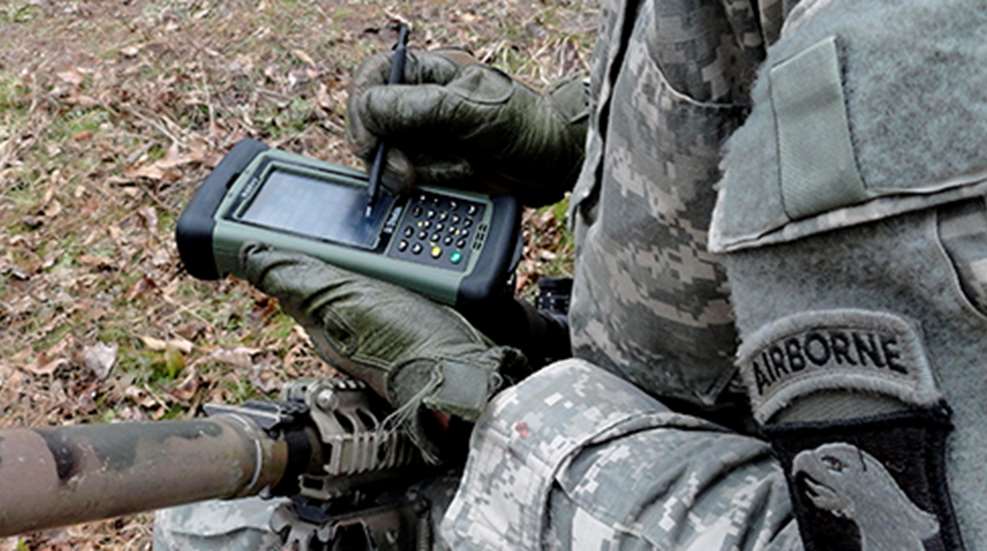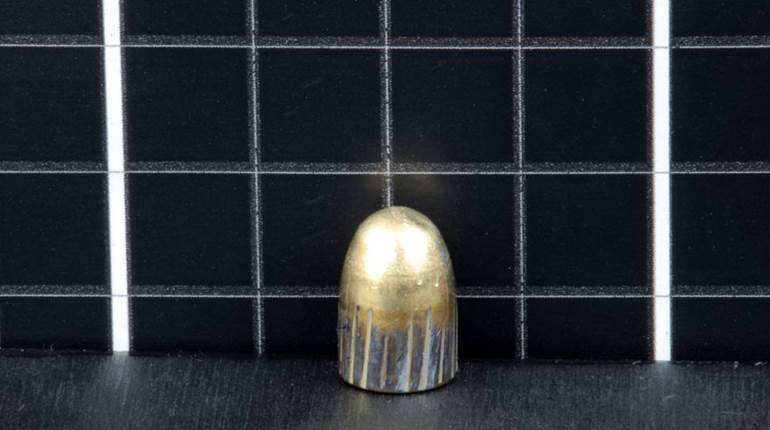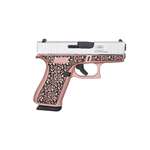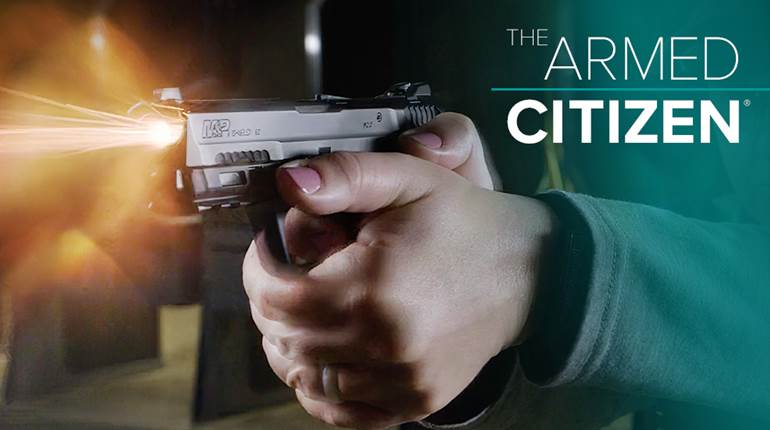
Two years ago, shooting alongside veteran Marine sniper Steve Reichert, I thought I’d accomplished something: Using handwritten ballistic data cards, I scored first-round hits on steel targets across a wooded valley at 1,000 and 1,400 yards. Despite his fancy handheld ballistic computer, Reichert missed both targets. Unperturbed, he punched two corrections into his Trimble Nomad computer and from then on, during several days of shooting, never missed-that is to say he didn’t miss another target at any distance. I knew, then, it was time to take a closer look at today’s advanced ballistic software.
Unlike a desktop computer ballistic program that generates drop, wind drift and time-of-flight tables, modern ballistic software incorporates all the shooter’s specifics-rifle, barrel length, twist-rate, scope details, ammunition details, etc.-and then, based upon the target (distance, angle up or down, moving or stationary) and the atmospherics (altitude, temperature, barometric pressure, wind direction and speed) it calculates the exact elevation and windage settings for a direct hit.
Such precision is unattainable with handwritten cards or manual calculations. For example, most shooters equate one minute of angle (m.o.a.) to 1.047" at 100 yards; however, some of today’s software uses the more exact 1.047197580733" and similar precision for many other factors. Shooting less than 500 yards, many shooters don’t need such computational assistance; beyond 500 yards, it becomes very useful; beyond 1,000 yards. it dramatically increases the likelihood of a hit.
Field Firing Solutions
The first program I examined was “Field Firing Solutions, Version Delta V,” loaded in a field-rugged Trimble Nomad handheld computer, the same as Steve Reichert used and with which he has fired his .338 Lapua Mag. rifle accurately to 2000 yards. Everything about the software demands and yields precision. Instead of lasing 100 yards for my initial zero, I was instructed to tape-measure it-remember, a laser is accurate “only” to within one yard. And I was required to measure not from my muzzle but from my scope’s elevation knob, the exact spot where a shooter applies elevation and windage changes.
Elevation knobs are inherently inconsistent, I learned-which is what inspired the software developer, Blaine Fields. Back in 2002 he had problems matching his new scope’s Bullet Drop Compensator to his rifle’s trajectory. Devising a simple computer program, he found that instead of the knob rotating 1/2 m.o.a. per click, it was actually 0.489 m.o.a. After solving that discrepancy he just kept going. “The program just took on a life of its own,” he explained. Following his procedures, I determined my scope’s precise click-value.
The Field Firing Solutions software contains a bullet database of nearly 3,500 entries, with room to enter custom loads, too. Many ballistic programs use only a bullet’s G1 Drag Model to produce a Ballistic Coefficient (BC), but Fields knew a bullet’s drag increases as it slows, lowering its BC, while today’s Very Low Drag bullets demand a low-drag G7 Model. Thus, his software employs multiple “stepped” Drag Models, which vary with bullet shape, length, weight and velocity at various distances.
Instead of entering the cartridge manufacturer’s muzzle velocity or measuring it with a chronograph-Field has found both slightly inaccurate-he had me test-fire at several distances, a process called “trueing”-to determine exactly how high or low my hit compared to the computer-generated point of aim. “The program will take this point of impact, compare it to the point of aim and then calculate a muzzle velocity which corresponds to that actual point of impact,” he explained. In one more step, I determined the velocity error factor and the software calculated the bullet’s BC. With that input, the software traced an updated trajectory that was “true,” reflecting my bullet’s precise arc, calibrating it to my scope’s click value.
Along with the corrected muzzle velocity and BC, I entered barrel length, twist-rate and direction of twist, and the exact height of the scope’s optical axis above the bore axis. All these details became a “profile” for that particular rifle, scope and cartridge, ready to be called up whenever needed. What if I wanted to profile another load or another rifle? According to Field, his program can store nearly 2 million such profiles.
It’s only when you reach a shooting location that you add more data, beginning with atmospherics. I obtained those from a Kestral 2500 electronic weather gauge-altitude, temperature, barometric pressure, humidity, station pressure, and wind direction and speed, entering it manually. The program can interpose three winds simultaneously, as well as consider vertical wind deflection from mountain updrafts and downdrafts. The atmospherics don’t usually change so long as a shooter stays at one location, but they can be updated at any time.
Now, add your target-its range, its angle uphill or downhill, whether it’s stationary or moving and to what degree. In a split-second the software calculates all winds, the atmospherics, range, up/down slant, target movement, spin drift (the tendency for a bullet to drift in the direction of its rifling), even the slight Coriolis effect caused by the earth’s rotation. The elevation and windage solution is offered as eighths, quarters or halves of one m.o.a., as 10ths of one mil, or as centimeters. To hasten engagement times, you can create a Target Range Card with a reference target for instantly shifting from one target’s firing solution to another.
“Field Firing Solutions is like having a very knowledgeable coach looking over your shoulder to answer questions,” says retired Phoenix SWAT officer Giles Stock, a 32-year instructor at Arizona’s Gunsite Academy and one of America’s most knowledgeable tactical rifle authorities. He has taken the system a step further, using his Trimble Nomad’s Bluetooth feature to automatically monitor and update atmospherics from a Kestral 4500 weather gauge, and to instantly input target data from Vector laser-ranging binoculars. It’s an incredible capability. Using the setup, he’s had rifle students score first-round hits to 2,200 yards. Marine sniper Reichert regularly does the same to well over a mile. Field Firing Solutions software is used by some of the world’s most elite special operations units as well as American police SWAT teams.
Instead of dialing computer-driven solutions on target knobs, some shooters employ riflescopes with a Horus reticle, a uniform grid that takes mil-dots to the next level. Arrayed as precise 1/5th mil aiming lines and dots, a Horus reticle appears confusingly busy-until you understand it. After that, you simply aim with the dot indicated by the ballistic software, never lifting your head away from the scope or rotating knobs. The combination of software and reticle make shooting multiple targets remarkably fast and impressively accurate.
Horus ATRAG Software
Horus also offers its own advanced ballistic software, ATRAG, the second program I explored. I was introduced to ATRAG this year while training with 101st Airborne Division snipers at Ft. Campbell, Ky., just before they deployed to Afghanistan. According to Brian Mellado of Horus Vision, the company won a U.S. Army contract for 2,700 Advanced Ballistic Calculator kits containing ATRAG software in a sturdy Trimble Recon handheld computer.
Snipers of the 101st Airborne’s 1st Battalion, 506th Infantry, have trained extensively with  ATRAG’s MX military version and are now using it daily in combat. Having already used Field Firing Solutions, I could appreciate the importance of ATRAG’s similar “trueing” of the trajectory curve-and concluded that ballistic software must include “trueing” to achieve accuracy. ATRAG operates a great deal like Field Firing Solutions but for a number of nuanced differences; for instance, ATRAG does not consider a bullet’s length, which can affect spin drift calculations. Also, ATRAG employs the “clock” system for entering wind direction, while Field Firing Solutions uses exact degrees.
ATRAG’s MX military version and are now using it daily in combat. Having already used Field Firing Solutions, I could appreciate the importance of ATRAG’s similar “trueing” of the trajectory curve-and concluded that ballistic software must include “trueing” to achieve accuracy. ATRAG operates a great deal like Field Firing Solutions but for a number of nuanced differences; for instance, ATRAG does not consider a bullet’s length, which can affect spin drift calculations. Also, ATRAG employs the “clock” system for entering wind direction, while Field Firing Solutions uses exact degrees.
The “Screaming Eagle” snipers use ATRAG calculations both as knob settings and as Horus reticle holds, depending on the situation. “There is a time and place for both dialing and holding,” explained the platoon’s senior sniper, “but we greatly prefer using holds with the Horus reticle. In a kinetic [shooting] environment that requires rapid engagements, the Horus reticle provides a great platform for not only first-round hits but for fast follow-on shots and corrections.”
When they occupy a final firing position, the 101st Airborne snipers input local atmospherics and likely target locations, then jot down multiple firing solutions so they’re ready to engage when enemy forces appear. For quick reference, they post this data on a wristband display like NFL quarterbacks use. “While emplaced on a COP [Combat Outpost] in Afghanistan,” one sniper recently emailed me, “we observed a target with an RPG [rocket launcher] pop up on a wall approximately 1,000 meters away. The enemy fired the RPG at our bunker and jumped back down … . A few seconds later the target  reappeared and began running down the wall. When he got to the end, my spotter was able to use a laser rangefinder to determine the distance-960 meters. After referencing my wristband for the correct dope, which was 9.4 mils elevation, I held 0.5 mils left for wind and engaged, resulting in a first-round hit. The entire event took no longer than 45 seconds and we would not have had enough time to engage if we would have had to dial [knobs] as the target only exposed himself for a short period each time.”
reappeared and began running down the wall. When he got to the end, my spotter was able to use a laser rangefinder to determine the distance-960 meters. After referencing my wristband for the correct dope, which was 9.4 mils elevation, I held 0.5 mils left for wind and engaged, resulting in a first-round hit. The entire event took no longer than 45 seconds and we would not have had enough time to engage if we would have had to dial [knobs] as the target only exposed himself for a short period each time.”
In addition to the U.S. Army’s ATRAG system, earlier this year Kestral released a new weather gauge that incorporates ATRAG ballistic software. Extremely lightweight and compact, the Kestral 4500NV integrates the ATRAG program with full atmospherics that are continuously updated. The title’s “NV” stands for “night vision” because the unit has special backlighting for use with night vision goggles.
I spent three months trying out the Kestral unit and its ATRAG software, finding it as accurate and user-friendly as the original version, and offering amazing capability in a very small package.
Ballistic AE Software
Another program that impressed me was “Ballistic AE,” an application for Apple iOS devices which include the iPhone, iPad and iPod Touch. This software’s many features include the ability to “true” a bullet’s trajectory, much the same as the already mentioned programs. Ballistic AE’s database contains more than 4,000 factory loads and bullets, to which a shooter can add his own handloads.
Sergeant Mark Jacobson, a longtime SWAT sniper and friend, has used Ballistic AE for two years, finding it no more difficult to learn than a typical application but requiring practice. “I wouldn’t hesitate to use it on the job,” he told me, “but I’ve used it enough to know the software.” He has entered several rifles and 16 cartridge loads into his program.
An especially useful function-common to this and the previous software programs-is one step mil-ranging. If your scope has a mil-dot reticle, simply measure an object of known size in mils, repeat this on the program’s miniature mil-dot reticle and, presto, there’s the distance. All three softwares also incorporate an inclinometer for determining uphill/downhill target angles.
I use an electronic weather gauge, but if you don’t have one, iOS devices can tap into the  National Weather Service (weather.gov) for atmospheric data, while GeoNames.com offers altitude, latitude and longitude, provided you’re near a cell phone tower. Ballistic AE’s solutions appear as inches or centimeters or incremental clicks (1/8 minute, 1/4 minute, 1/2 minute or full minute), and mil increments (0.1 mil, 0.5 mil), which can be dialed on knobs or used to select a Horus reticle aiming point.
National Weather Service (weather.gov) for atmospheric data, while GeoNames.com offers altitude, latitude and longitude, provided you’re near a cell phone tower. Ballistic AE’s solutions appear as inches or centimeters or incremental clicks (1/8 minute, 1/4 minute, 1/2 minute or full minute), and mil increments (0.1 mil, 0.5 mil), which can be dialed on knobs or used to select a Horus reticle aiming point.
I’ve been using this program on an iPad Mini whose large screen-6"x4¾"-is easy to read and offers touch-activated controls. The downside? The iOS devices probably won’t stand up to tough field use.
But the program has proved acceptably accurate. Sergeant Jacobson reports that the first time he shot his .338 Lapua Mag. out to 1,000 yards using Ballistic AE, the solutions were within one m.o.a. at 700, 900 and 1,000 yards, but he had to adjust elevation for 800 yards.
If you have an Android Operating System phone or device, a program similar to Ballistic AE-“Bulletflight M”-is available from Knight’s Armament, which builds Stoner rifles and the U.S. Army’s M110 semi-automatic sniper rifle.
Bulletflight M is also available for iPhone, iPod Touch and iPad, and requires iOS 4.2 or later.
All this ballistic software has made me a believer. But despite such impressive capabilities, long-range shooting still requires accurate wind estimation and a skilled shooter to place the bullet. A rifle doesn’t shoot itself-at least not yet.






































